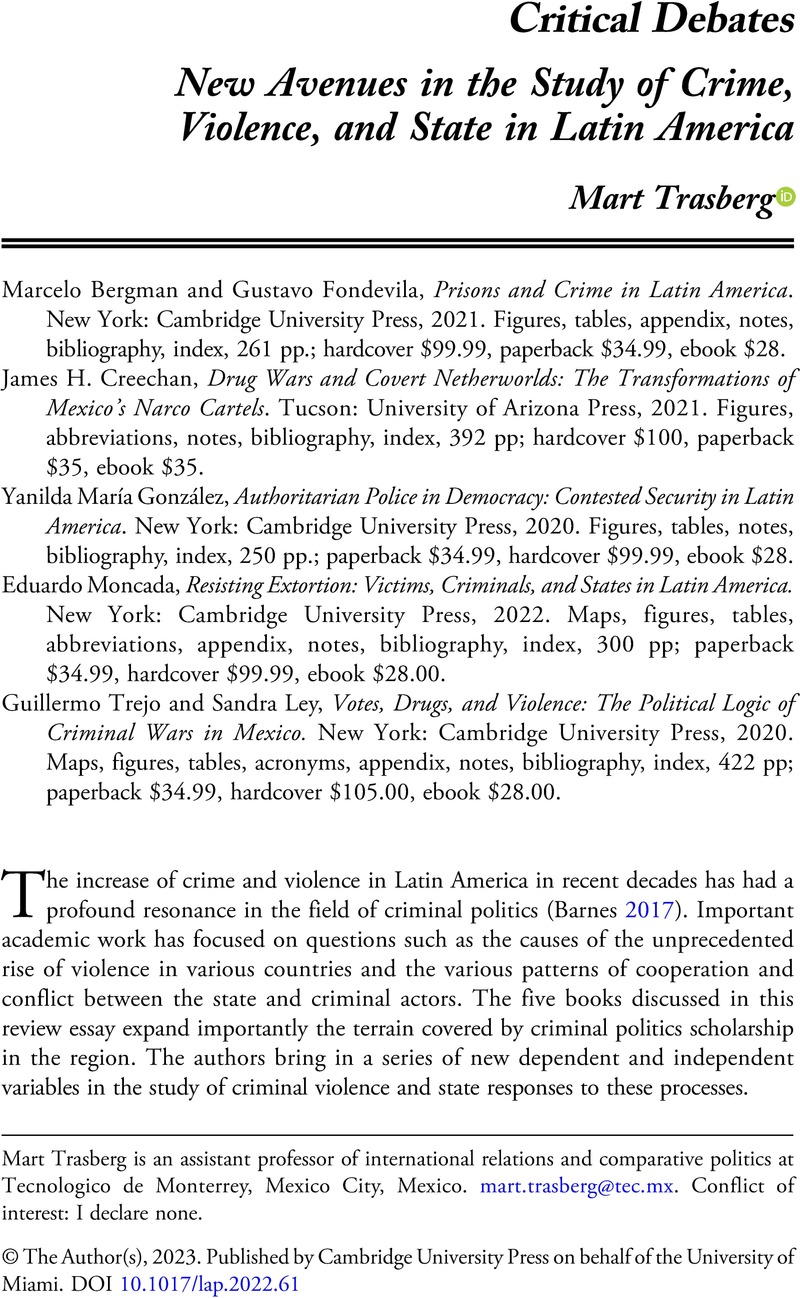Crossref Citations
This article has been cited by the following publications. This list is generated based on data provided by Crossref.
Hevi, Stewart Selase
Agbenorxevi, Clemence Dupey
Malcalm, Ebenezer
Gborse, Nicholas Mawunyah Mawunyah
Hevi, Jeffrey Mawutor
and
Preko, Vincent Yaw
2023.
Fear of terrorist attacks and psychological distress in Sub-Saharan Africa: moderated mediation model.
Safer Communities,
Vol. 22,
Issue. 4,
p.
281.
Palma Andrade, Washington Leodan
2024.
Vacunas extorsivas en Ecuador: Un análisis jurídico sobre las tendencias de extorsión en América Latina.
Revista Multidisciplinaria Voces de América y el Caribe,
Vol. 1,
Issue. 1,
p.
432.



